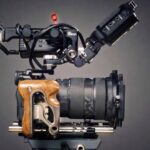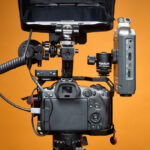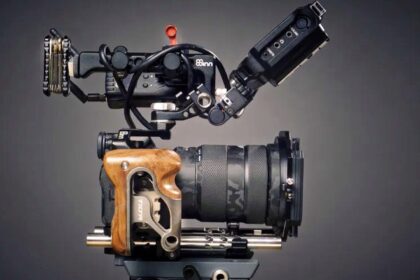Magnetic camera mounts have become extremely popular among photographers, vloggers, and smartphone users who want fast, convenient ways to shoot on the go. From car dashboard filming to outdoor vlogging to quick tripod attachments, magnetic mounts offer speed and flexibility that traditional clamps cannot match.
- What Are Magnetic Camera Mounts?
- Are Magnetic Camera Mounts Safe for Cameras?
- Are Magnetic Camera Mounts Safe for Smartphones (Especially iPhones)?
- Pros and Cons of Magnetic Camera Mounts
- Do Magnetic Mobile Holders Have Disadvantages?
- Are Magnets Bad for Cameras?
- When Should You Avoid Magnetic Camera Mounts?
- How to Use Magnetic Camera Mounts Safely
- Best Alternatives to Magnetic Mounts
- Recommended Magnetic Mount Options (Non-Competitive)
- Frequently Asked Questions (FAQ)
- Is a magnet bad for a camera?
- Does a magnetic mount affect an iPhone camera?
- Does a magnetic case affect camera quality?
- Why is my iPhone flash not working?
- Can a magnet damage a smartphone?
- Are magnetic outdoor cameras reliable?
- Do magnets interfere with wireless signals?
- Are magnetic mounts better than standard mounts?
But many users still wonder: Are magnetic camera mounts actually safe for your camera, iPhone, or other devices?
In this comprehensive guide, we’ll explore how magnets interact with cameras, smartphone components, stabilization systems, sensors, and flashes—so you know exactly what’s safe and what to avoid.
This full guide covers:
- How magnets affect cameras and iPhones
- Whether magnetic mounts cause camera or flash issues
- Advantages and disadvantages
- When magnets can create problems
- Safety tips and long-term usage guidance
- Best alternatives and recommended use cases
- Real answers to popular Google “People Also Ask” questions
Let’s break it all down.
What Are Magnetic Camera Mounts?
Magnetic camera mounts are photography accessories that use strong magnets—typically neodymium magnets—to hold cameras or smartphones securely in place. They are widely used for:
- Travel vlogging
- Car dashboard filming
- Studio camera positioning
- Outdoor mounting on metal surfaces
- Quick-release tripod setups
- Flexible, hands-free shooting angles
Types of magnetic camera mounts
- Smartphone magnetic mounts
- GoPro / action cam magnetic bases
- Magnetic tripod heads
- Magnetic camera holders for metal surfaces
- Magnetic wireless camera mounts for outdoor security cameras
These mounts fall under categories such as:
- Camera holders & mounts
- Tripods & stabilizers
- Accessories & add-ons
They offer speed and convenience—but you still need to know if they are safe.
Are Magnetic Camera Mounts Safe for Cameras?
Short Answer (Featured Snippet-Friendly)
Yes. Magnetic camera mounts are generally safe for digital cameras because magnets do not affect CMOS/CCD sensors or camera electronics.
Only extremely strong industrial magnets used incorrectly may cause issues with older stabilization systems.
Let’s look deeper.
Do magnets damage camera sensors?
Camera sensors (CMOS/CCD) are not affected by external magnets. This is because:
- Sensors use light-sensitive photodiodes, not magnetic components.
- Camera bodies include metal shielding to protect internal circuits.
- Magnets do not erase modern digital data.
So your digital camera sensor is safe.
Do magnets affect autofocus or optical image stabilization (OIS)?
This is where some concern is valid.
Older DSLRs and lenses with mechanical stabilization may be slightly influenced by very strong neodymium magnets.
But for modern cameras:
- Mirrorless stabilization is electronically shielded
- Lenses are enclosed in non-magnetic housings
- OIS components are designed to resist external magnetic fields
Unless the magnet is extremely powerful and placed directly on the lens barrel, it won’t cause issues.
Does magnetic mounting weaken over time?
Magnets do not lose strength unless:
- They are exposed to extreme heat
- They are dropped repeatedly
- They are very low-quality materials
High-quality neodymium magnets retain about 99% of their strength over 10 years.
Are Magnetic Camera Mounts Safe for Smartphones (Especially iPhones)?
iPhones have sensitive components like OIS and closed-loop autofocus, which makes users nervous about magnets.
Let’s clear the confusion.
Does a magnetic mount affect the iPhone’s camera?
For modern iPhones (iPhone 12 and above):
- Apple officially states that magnets do not interfere with the camera
- MagSafe itself uses magnets
- OIS is internally shielded
Problems only arise if:
- The magnet is extremely strong
- It is placed directly on the camera housing
- A cheap magnetic plate interferes with lens movement
For magnetic car mounts and holders, the risk is minimal.
Do magnets affect the iPhone flash or flashlight?
No, magnets do not directly affect iPhone flash systems.
Flash failures usually come from:
- Software bugs
- Overheating
- Camera app glitches
- Disabled flash settings
- Hardware malfunction
- Damaged flex cables
- Battery low-power mode
Magnets are not involved.
Do magnets cause “camera flash not working” issues on iPhone XR, iPad, etc.?
Common user-reported issues include:
- iPhone XR back camera and flash not working
- iPad camera not working
- My iPhone flash is not working
But in all of these cases, the real causes are:
- iOS bugs
- Dirt on the lens
- Low battery
- LED overheating protection
- Water damage
- Hardware failure
Only incredibly strong magnets held directly over the flash could possibly cause interference, and even then, it’s extremely rare.
Pros and Cons of Magnetic Camera Mounts
Advantages of magnetic camera mounts
- Instant attachment and removal
- Perfect for vlogging and travel
- Stable on metal surfaces
- Smooth shooting transitions
- Supports multiple mounting angles
- Adds convenience to tripods and stabilizers
- No need for screw tightening or clamps
Disadvantages of magnetic mobile holders
- Potential interference with older OIS systems
- Can slip if the magnet is weak
- Dirt or metal debris can reduce grip
- Magnets attract small metal particles outdoors
- Not ideal near sensitive gear like credit cards
- Cheap magnets can demagnetize or break
Do Magnetic Mobile Holders Have Disadvantages?
Here are the specific disadvantages targeted at mobile users:
- If the magnetic plate is too close to the camera module, it may put physical pressure on the lens
- Some cases are not compatible with thick magnetic plates
- Strong magnets may slightly affect older iPhone stabilization systems
- Over time, cheap magnet pads may loosen
- Weak magnetic holders may cause sudden drops
Smartphone users should always choose high-quality, strong-grip magnetic mounts.
Are Magnets Bad for Cameras?
Let’s break it down by camera type.
Digital cameras
Safe. No magnetically sensitive components.
DSLRs & mirrorless cameras
Safe, unless extremely strong magnets are placed on stabilization housings.
GoPros and action cameras
Completely safe because:
- They are tightly sealed
- They use electronic stabilization
- Internal components are magnetically shielded
Magnetic outdoor cameras
These cameras benefit from magnetic bases because they allow quick repositioning.
Magnetic wireless cameras
Safe because wireless signals (Wi-Fi, Bluetooth) are not affected by magnets.
When Should You Avoid Magnetic Camera Mounts?
Avoid magnets when:
- Shooting in areas with metal dust (workshops, industrial zones)
- Using very old stabilized lenses
- Using ultra-sensitive cinema lenses
- Filming on extremely uneven, vibrating surfaces
- Doing high-risk activities where drops are possible
- Mounting heavy gear on small magnetic bases
How to Use Magnetic Camera Mounts Safely
Tips to avoid damage
- Use certified neodymium magnets
- Avoid placing magnets directly on lens housings
- Keep the magnet clean to avoid scratches
- Check weight capacity
- Do not use mounts on very bumpy surfaces
- Avoid exposing magnets to extreme heat
How to test magnetic grip strength
- Attach your camera
- Shake gently
- Tilt 45 degrees
- Observe for slipping
- Test before actual shooting
If the mount passes all tests, it’s safe to use.
Best Alternatives to Magnetic Mounts
If magnets aren’t ideal for your situation, consider these alternatives:
- Mechanical clamp mounts
- Tripods
- Adjustable stabilizers
- Ball-head tripod adapters
- Quick-release locking systems
- Suction-based car mounts
- Grip-based phone holders
These provide extra stability in high-risk environments.
Recommended Magnetic Mount Options (Non-Competitive)
We won’t list specific brands, but here are categories you can safely use:
- High-strength neodymium phone mounts
- Magnetic tripod conversion bases
- Magnetic plates with rubberized anti-slip coatings
- Hybrid magnetic + mechanical locking mounts
- Outdoor magnetic mounts for wireless cameras
For travel vloggers, check out our internal guide:
Explore the best phone camera holders for travel vlogging:
https://www.cameraholder.com/best-phone-camera-holders-for-travel-vlogging-in-2025/
Frequently Asked Questions (FAQ)
Is a magnet bad for a camera?
No. Digital cameras are not affected by magnets unless they’re extremely strong and placed directly on sensitive components.
Does a magnetic mount affect an iPhone camera?
Generally no. iPhones are built with magnetic shielding, and MagSafe itself uses magnets.
Does a magnetic case affect camera quality?
Only if it physically blocks the lens or interferes with stabilization—rare with good-quality cases.
Why is my iPhone flash not working?
Common causes include:
- Overheating
- Low power mode
- Software bugs
- Camera settings off
- Hardware damage
Magnets are usually not the cause.
Can a magnet damage a smartphone?
Only extremely strong magnets can affect older stabilization hardware. Modern phones are mostly safe.
Are magnetic outdoor cameras reliable?
Yes. Magnetic bases are commonly used for wireless outdoor cameras because they allow quick repositioning.
Do magnets interfere with wireless signals?
No. Magnets do not interfere with Wi-Fi, Bluetooth, or cellular signals.
Are magnetic mounts better than standard mounts?
They’re better for convenience and speed, but mechanical clamps are safer for heavy cameras.




